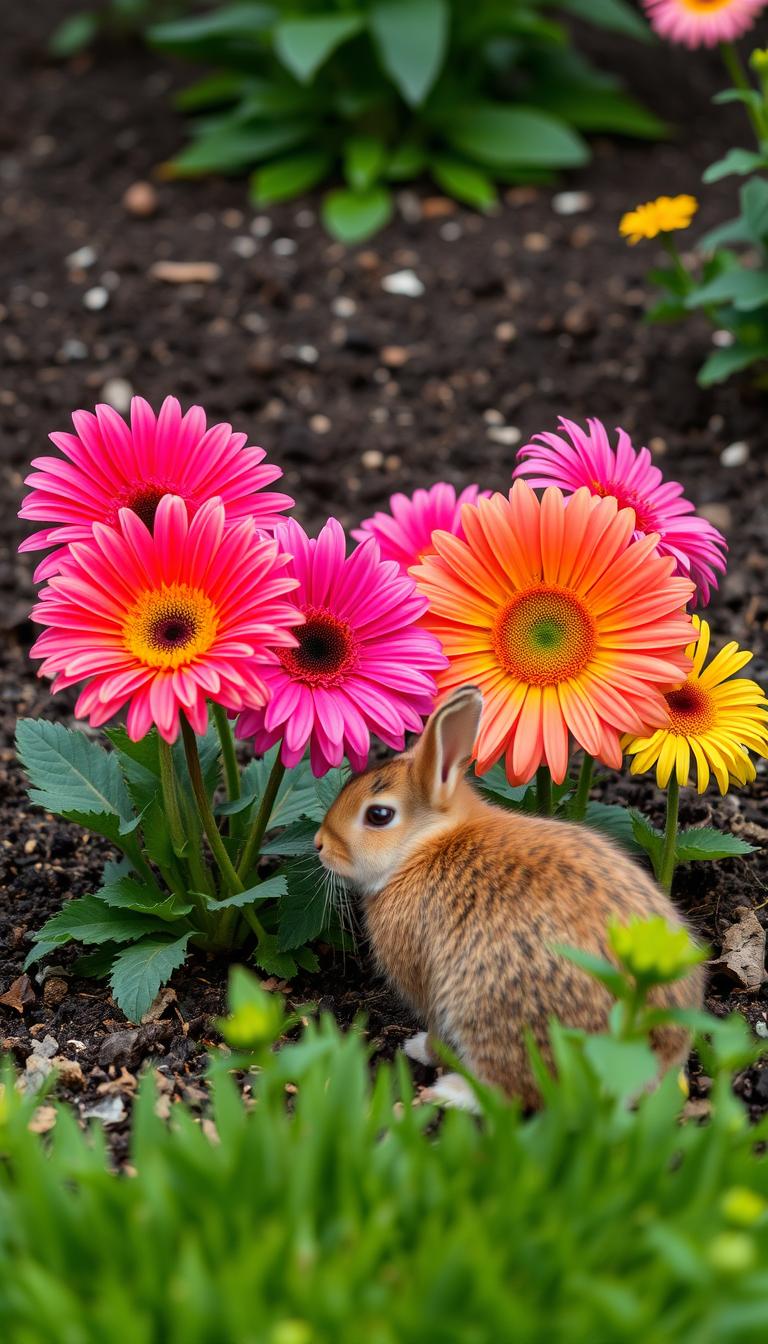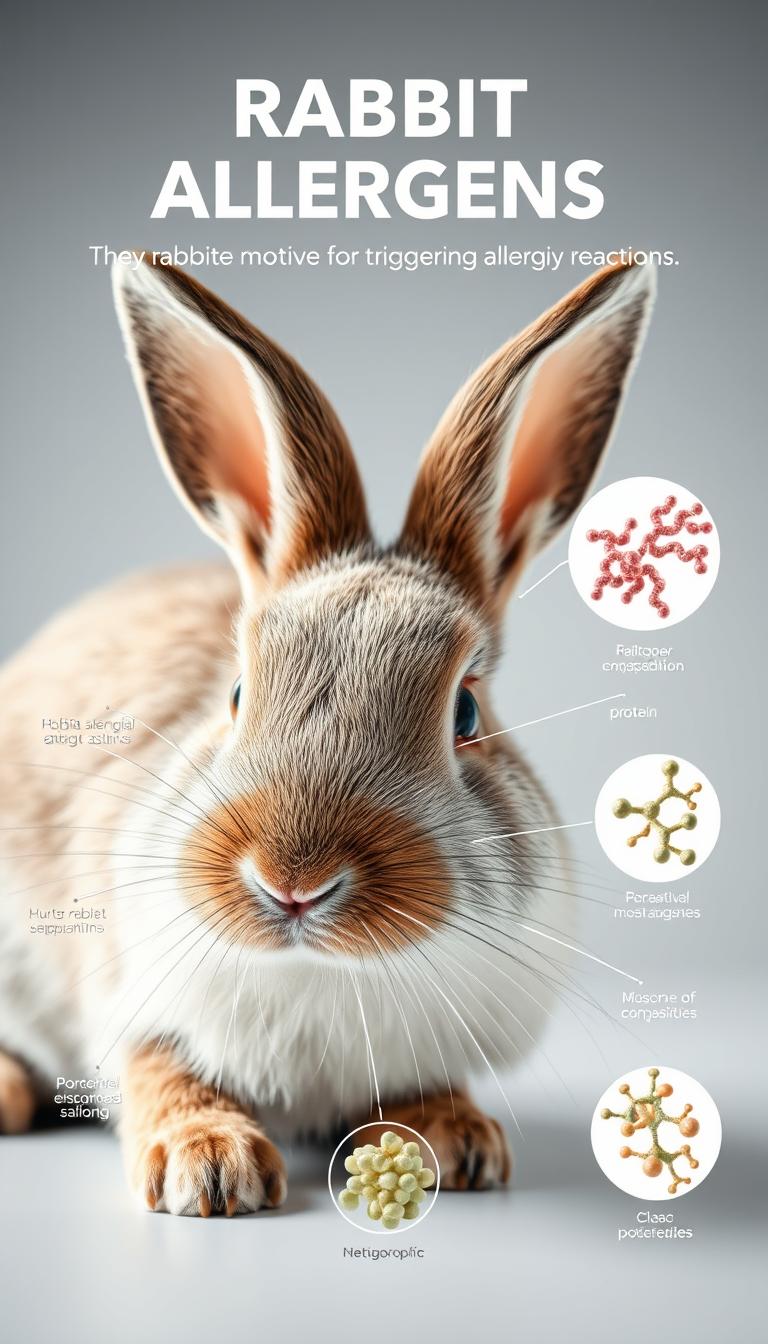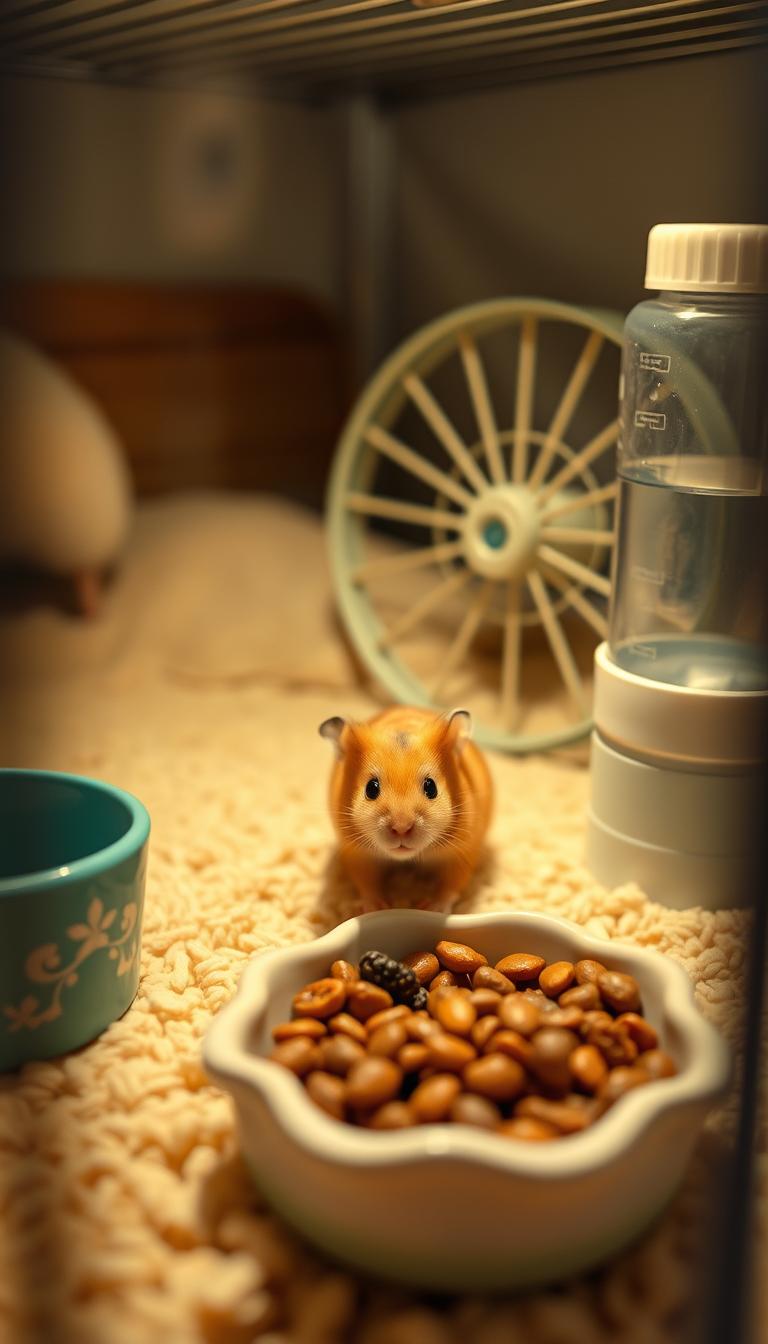If you’ve ever spotted fluffy visitors nibbling your prized blooms, you’re not alone. Many gardeners wonder how certain plants hold up against wildlife. Rutgers University research reveals that these vibrant flowers face occasional heavy damage from hungry rabbits, especially when food is scarce.
Young shoots and tender leaves often attract these animals. While their colorful petals brighten any garden, they’re not the most reliable choice for rabbit-prone areas. Some varieties fare better than others, but no plant is entirely safe when rabbits get determined.
Understanding why these creatures target specific flowers helps protect your landscape. Seasonal changes play a role too—spring growth tends to draw more attention. You’ll learn how to balance beauty with practicality while managing furry visitors.
Comparing different species’ resilience can save you frustration. Even “resistant” labels don’t guarantee safety, but smart strategies can reduce risks. Let’s explore how to enjoy these cheerful blooms without surrendering your yard to nature’s snackers.
Table of Contents
Gerbera Daisies in Your Garden: Beauty, Benefits, and Considerations
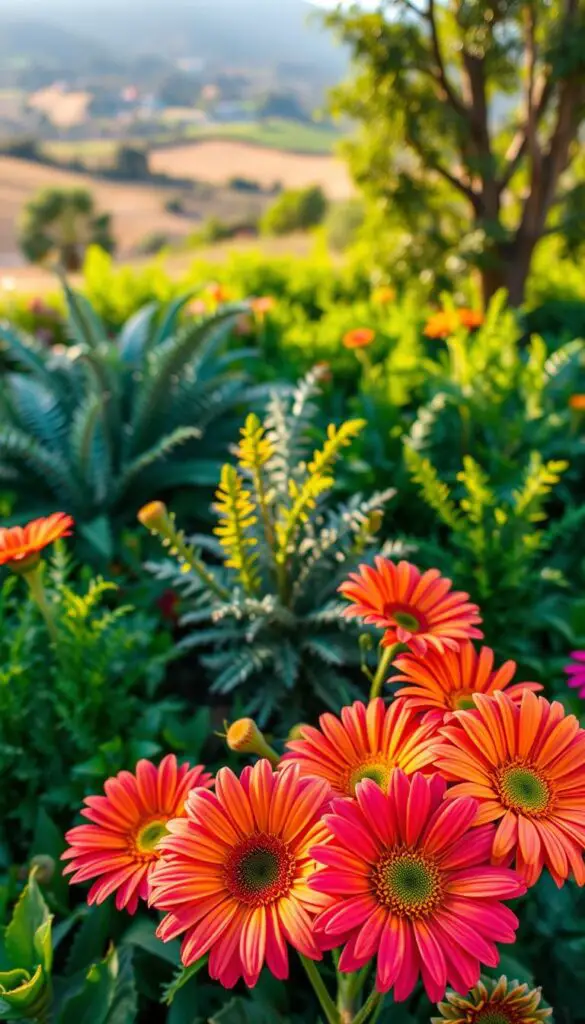
Vibrant blooms can transform your outdoor space, but balancing aesthetics with wildlife challenges requires strategy. These cheerful flowers thrive in sunny spots with well-draining soil, rewarding you with months of color when cared for properly.
The Unique Charm of Gerbera Daisies
Their velvety petals and kaleidoscope hues make these plants stand out in any garden. Unlike many sun-loving perennials, they flourish in containers and beds alike when given morning light and afternoon shade. Though not invincible against nibblers, their long-lasting blooms justify extra protective measures.
Pairing With Nature’s Bodyguards
Smart companion planting creates living fences around vulnerable flowers. Master Gardener Christine Freeburn suggests: “Fragrant herbs like lavender and Russian sage act as natural repellents while adding texture to your landscape.” Consider these allies for your garden:
- Salvia’s spiky purple blooms
- Catmint’s fuzzy silver-green foliage
- Marigolds’ pungent orange barriers
Space taller plants behind your colorful centerpieces to block access while creating depth. This layered approach beautifies your space while outsmarting hungry visitors.
Are Gerbera Daisies Rabbit Resistant
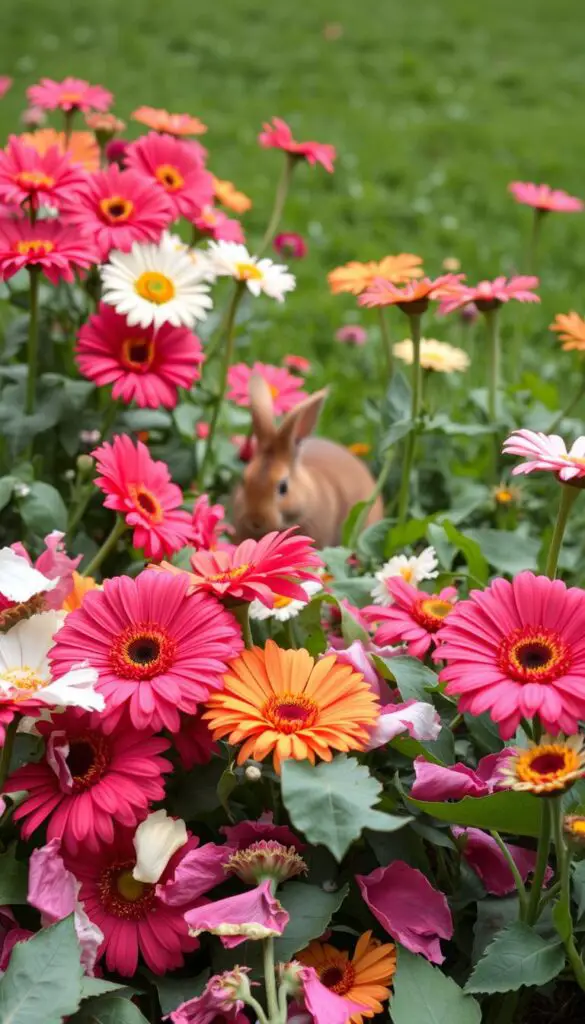
Spotting chewed petals in your flower beds? You might have furry visitors. While no plant is completely safe when food is scarce, some varieties stand up better to nibbling than others.
Spotting Bunny Bites
Look for clean 45-degree cuts on stems and vanished flower buds. Unlike insect holes or disease spots, these marks show sharp teeth at work. Tender new growth disappears first, while older leaves often remain untouched.
Daisy Family Showdown
Popular varieties differ in wildlife appeal. African and Shasta types repel both deer and rabbits with their bitter taste. English daisies share the same risks as their colorful cousins, while Blackfoot varieties use fuzzy textures as defense.
| Daisy Type | Rabbit Resistance | Key Defense |
|---|---|---|
| African | High | Bitter flavor |
| Shasta | High | Tough leaves |
| Gerbera | Low | None |
| Blackfoot | High | Fuzzy texture |
Rabbits eat what’s easiest first – that’s why young shoots vanish overnight. Pair vulnerable blooms with prickly companions like lavender to create natural barriers. This strategy lets you enjoy delicate flowers without serving a bunny buffet.
Strategies for Protecting Your Garden from Rabbits and Deer

Your garden can thrive with the right defenses against wildlife. Combining physical barriers, natural repellents, and smart planting creates layers of protection that keep your blooms safe.
Natural Deterrents and Repellents
Strong scents work wonders against curious animals. Christine Freeburn swears by hen manure—it deters squirrels while feeding your soil. Homemade sprays with garlic or chili pepper make plants taste unpleasant to nibblers.
| Repellent Type | Frequency | Best For |
|---|---|---|
| Commercial sprays | Weekly | Established plants |
| Egg-based solutions | After rain | Vegetable patches |
| Blood meal | Monthly | Flower beds |
Using Fencing and Row Covers Effectively
Physical barriers stop rabbits eat habits better than any spray. Use 1/2-inch mesh wire buried six inches deep—this blocks burrowing. For above-ground protection, two-foot tall fencing works best, especially near plants rabbits love.
Lightweight row covers shield tulips and tender shoots without blocking sunlight. These fabric shields let rain through while keeping out pests like beetles and chipmunks.
Smart Garden Planning with Resistant Plants and Shrubs
Choose shrubs with rough textures that plants repel wildlife naturally. Weigela and spirea form beautiful barriers with their dense growth. Potentilla’s fuzzy leaves discourage hungry visitors better than smooth-leaf varieties.
Clear hiding spots near vegetable gardens—tall grasses and woodpiles attract animals. Pair vulnerable flowers with pungent herbs like rosemary to mask appealing scents. This approach reduces pests while boosting your garden’s beauty.
Wrapping Up Your Garden’s Wildlife Safeguards

Creating a wildlife-friendly space that thrives takes more than wishful thinking. As horticulturist Christine Freeburn notes, “Even tough perennials become tempting snacks during harsh springs or droughts.” Your defense plan should evolve with the seasons—what works in summer might fail when snow covers the ground.
Track nibble patterns around plants and adjust protections early. Pair fragrant herbs with vulnerable blooms to confuse hungry animals. Remember: fences need checking after heavy rains, and sprays lose potency in sunlight.
Embrace imperfections as part of nature’s rhythm. A chewed leaf might mean bunnies explored but moved on. Focus on plants repel tactics that work 80% of the time, knowing occasional losses are inevitable. This balanced approach lets you enjoy both your roses and watching fawns explore nearby woods.
Consistency beats perfection in garden care. Rotate deterrents monthly to outsmart clever rabbits. Celebrate each untouched blossom as proof your layered strategies work. With patience, you’ll create beauty that withstands nature’s taste tests.

